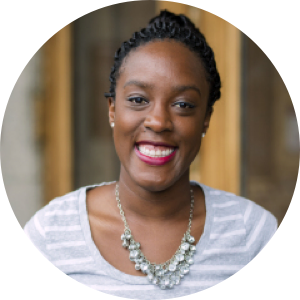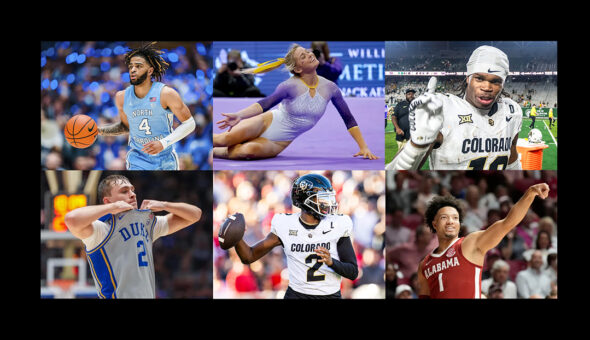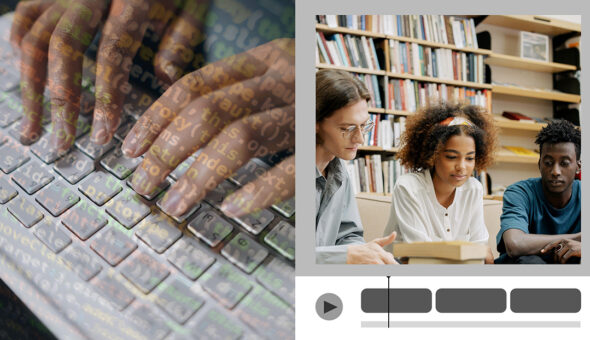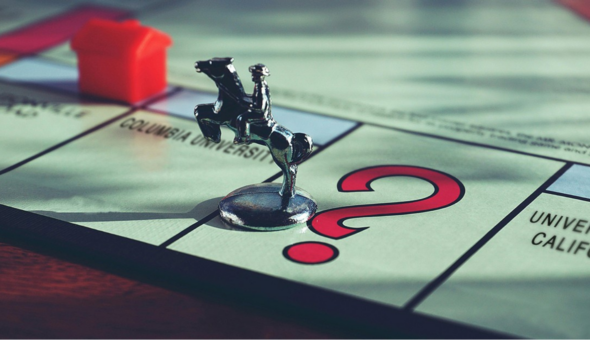Recognizing and Nurturing Your Creativity
To start, you should embrace the reality that your strengths and creativity are already a part of your work. Creativity is not a mantle many of us wear with confidence, so there is a strong tendency to feel like an imposter when applying this term to our work. Moving to a place of confidence is important to grow your outputs.
By opening yourself to your creative side, you embark on a new path. One filled with solutions to problems in your life, at work, and in your community.
When you apply your perspective and your talents to create something, you should be proud of your efforts. But too often, people shrug them off. People who have clearly done creative things will then automatically deflect or minimize them and say, “Oh, well it was just this, or it wasn’t that big of a deal.” Especially in higher education, some of those decisions impact students’ experiences.
In higher ed, your creative output has a direct impact on the lives of others, especially the students. Each of these students experiences an institution on a deep level. It’s their community, their home away from home, and a part of their legacy. If you use your perspective and your ability to create something that serves a larger purpose and makes a difference in someone’s life, you should be proud of that.
I think it’s important for people to feel confident in sharing their impact and to recognize what their creative efforts have meant to the people who were close to it. It may feel like bragging, but it’s worth saying, “Hey, I finished this thing” when someone asks how you are. Responding with something you’re working on is part of the process and an opportunity to explore new ways to expand your work.
I recommend finding a supportive community and using that safe space to talk openly and honestly about your accomplishments. Grow your confidence in your abilities, especially when you’re uncomfortable talking about your work, and you’ll gain validation in your value.
After practicing with a group, you’ll gain the courage to share your successes more naturally when asked in the future. Soon, it will feel like second nature to embrace your accomplishments. It also has the added benefit of keeping you accountable. Once you’ve said something out loud, people are invested in your success.
The Act of Creative Problem Solving
Once you recognize your innate creative strengths, think about any problems you’ve encountered in your work or life that could be improved upon. Use the design thinking model, a solutions-based approach to problem-solving, as a way to structure creative thinking. Then, move into interpretation. Rather than rushing to a solution, recognize the problem and learn as much as you can about that problem.
You want to think it through so you can fully understand the implications of any change that you make as part of the solution. I always encourage people to ask these three questions when vetting an idea:
- Who does this idea, project, or solution help?
- Who does it hurt?
- What can be done to maximize the former condition while minimizing the latter?
We don’t work or live in a vacuum. When problem-solving, you need to stop and consider all of the costs involved with innovation. We’d love to believe our ideas will improve the lives of others, but we have to be open to the possibility that we’re wrong. I think of this as being broadminded in your creativity. We need to think big and explore as many different avenues for ideas as possible. Innovative solutions are coming from far more places than you might imagine.
Take all the time you need, because nothing is moving so fast that you don’t have time to think about it.
Be Flexible and Open
It’s important to be flexible when you’re trying to achieve something new. That comes into play in your capacity to change as a project evolves. I advise taking inspiration from people and opening the creative process to collaboration. This is another reason why it’s so important to offer up your work-in-progress, first in your safe space, but ultimately in your everyday life.
Identify opportunities in your calendar and build time for problem-solving into your life instead of waiting for something to break.
Flexibility is also necessary for unpacking how you’re going to stay energized for the long haul. Pay attention to how your personal rhythms work and apply that as much as you can to your personal schedule. If you’re limited in time and resources, this can actually work in your favor with the right mindset. Scarcity can be a breeder of creativity.
Identify opportunities in your calendar and build time for problem-solving into your life instead of waiting for something to break, and don’t be afraid to embrace your creativity throughout the process.
Creativity isn’t a Rush to the Finish Line
Creation and implementation take time. When you do something creative, it usually also involves doing something new. This means you have to learn a new skill or take in new information and get comfortable in that space.
I often look at the example of Lin Manuel Miranda. It took seven years to write and produce Hamilton. He had great source material, as well as great collaborative partners, and it still took years to define, edit, and refine the work before it was ready for the public.
In the workplace especially, creativity isn’t just you deciding to do something. First, you have to get the buy-in and trust from your colleagues and advisors that your idea is something you can achieve. This is going to lengthen the process. Recognizing that the execution of a creative idea, and the whole process of development and revising, is going to take time.
Contrary to the popular belief that you can only be creative if there are no limits imposed on your work, a great deal of creative work is accomplished because there are boundaries in place.








